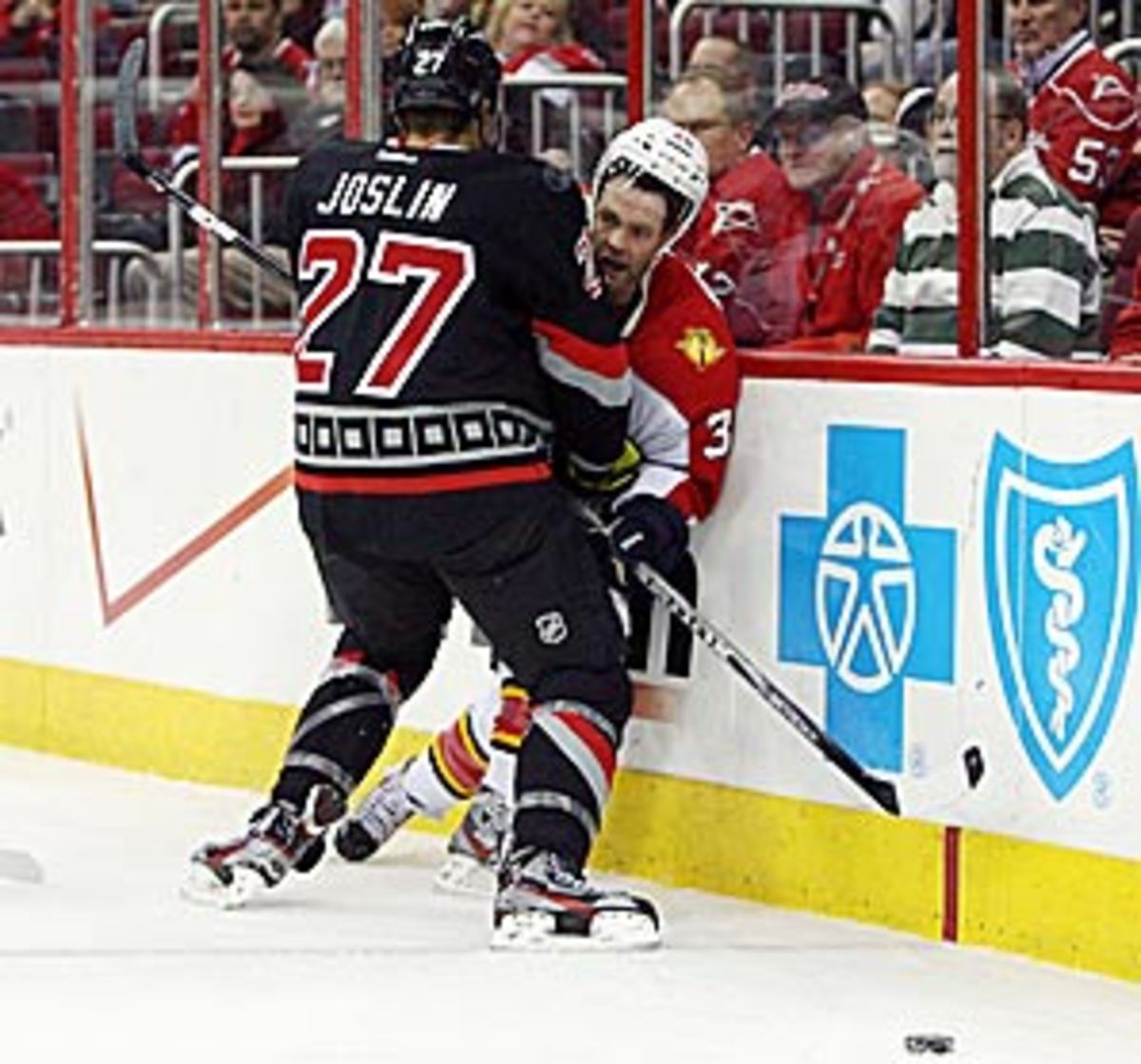A simple way to curb concussions


Not to take face time away from Brendan Shanahan and his seemingly daily on-camera explanation of yet another suspension, but I think I can help clear the clutter for him. More importantly, I believe the solution to this complex issue -- what constitutes a legal hit and what is out of bounds while the NHL struggles to eradicate hits to the head -- is simple in its core solution. Better yet, the league already has a rule on its books that addresses the issue.
The last paragraph of Rule 81.1 -- Icing -- states, "Any contact between opposing players while pursuing the puck on an icing must be for the sole purpose of playing the puck and not for eliminating the opponent from playing the puck..."
And there you have it: A provision that protects a player from a potentially dangerous and reckless situation while allowing for contact in the act of playing the puck. Isn't that goal all over the ice? Instead of splitting hairs with shades of gray and another endless explanation, simply extend that notion to plays all over the ice.
The rationale is basic: Get checking back to what it is all about -- taking possession of the puck -- while at the same time allowing the speed of the game to progress as the athletes continue to evolve. Forcing defending players to make a play on the puck first will keep sticks on the ice and lower the leverage point of any contact. Hands are naturally down with the stick on the ice and shoulders are likewise as part of the skating posture compared to the rising hands and shoulders in a puck optional hit. That alone should reduce contact to the head.
Also, by thinking of checking in this manner, it allows the puck carrier that all important extra beat to prepare for contact. If speed is of the essence, then finding a way to give the playmaker a chance to brace is critical.
Beyond that, by making the 81.1 philosophy all encompassing, the NHL could take the lead in promoting proper checking mechanics. That would go a long way in helping USA Hockey to drive home its new mandates pertaining to body contact up until the age of 13. By promoting puck-first pursuit, the youth player learns how to be ready for contact. Then, when he enters Bantam hockey, it is instinctual. If NHL players provided the same example, the game at all levels would benefit. And Shanny could step away from the camera.
Of course, there will be other gray-dations. But I still think this simple solution is a good place to start. It sure beats the convoluted "north-south", "principle point of contact" and "targeted" jargon that is quickly becoming commonplace. And I 'm not offering up something that constitutes a rule change, just an application modification. Plus, it's something thqat fans and players could understand, which certainly isn't the case right now.
The puck-first solution isn't complicated and it passes the eyeball test a lot better in real time than does debating after the fact whether the head was "picked" and if so, if there was intent. Come to think of it, referees might like this as well.
Many won't, though. I can hear the cry of "wussification" already. So, let's recap:
1. Concussions are a major issue.
2. The game is faster than ever before and skill is what the NHL wants to promote (as stated coming out of the lockout in 2005).
3. A balance needs to be struck between speed, skill, physical play and safety.
4. Concussions are a major issue.
Thus, finding a solution is paramount. This is what I came up with.
HACKEL:Would bringing back the red line curb head injuries?
The NHL's major rule changes brought the game to this precipice by removing the red line, shrinking the neutral zone and adding the trapezoids so goalies can't diffuse the forecheck by playing the puck. Some people would go further back and say the current trouble is all due to the addition of the instigator rule, which allows guys to run around wreaking mayhem without the fear of self-correcting on-ice retribution. Further, like fighting, the bone-crunching open-ice hit makes for good highlight footage and fans stand and cheer those moments in the moment.
Believe me, I get it. I've always loved the rugged nature of our sport. The combination of grace and grit makes it the best game in the world. Making sure those two elements continue to coexist is the challenge -- as indicated by the number of players of every ilk who have been idled by concussion this season alone.
We could put the red line back in, remove the trapezoids and alter the neutral zone. Heck, abolish the instigator rule while we're at it. Or, we could acknowledge where the game is going and promote tough, hard-nosed, old school body contact to get the puck back and get going on offense as quickly as possible.
Instead of over-reacting and looking for sweeping change, the NHL may be sitting on an answer they crafted -- as written in Rule 81.1.
HACKEL:NHL has more work to do on curbing concussions
What do you think? Try applying this idea to Rene Bourque's hit on Brent Seabrook last Sunday night....
Or to Brendan Shanahan's decisions.
And his explanations.
